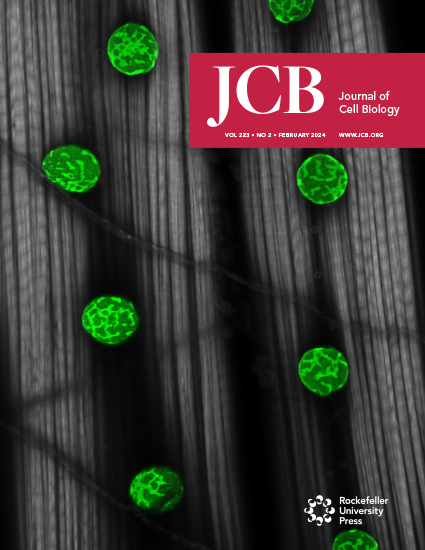JIP4 and RILPL1 utilize opposing motor force to dynamically regulate lysosomal tubulation.
IF 6.4
1区 生物学
Q1 CELL BIOLOGY
引用次数: 0
Abstract
Lysosomes are dynamic organelles that remodel their membrane in response to stimuli. We previously uncovered a process we term LYsosomal Tubulation/sorting driven by LRRK2 (LYTL), wherein damaged lysosomes generate tubules sorted into vesicles. LYTL is orchestrated by the Parkinson's disease kinase LRRK2 that recruits the motor adaptor protein and RHD family member JIP4 to lysosomes. JIP4 enhances LYTL tubule extension toward the plus-end of microtubules. To identify new players involved in LYTL, we mapped the lysosomal proteome after LRRK2 kinase inhibition. We found that RILPL1 is recruited to dysfunctional lysosomes in an LRRK2 kinase activity-dependent manner, facilitated by pRAB proteins. Unlike JIP4, RILPL1 induces retraction of LYTL tubules by binding to p150Glued, thereby moving lysosomal tubules toward the minus-end of microtubules. Our findings emphasize the dynamic regulation of LYTL tubules by two distinct RHD proteins and pRAB effectors, acting as opposing motor adaptor proteins. These opposing forces create a metastable lysosomal membrane deformation, enabling dynamic tubulation events.JIP4和RILPL1利用相反的运动力动态调节溶酶体管化。
溶酶体是一种动态的细胞器,在受到刺激时能重塑其膜。我们之前发现了一个我们称之为LRRK2 (LYTL)驱动的溶酶体管化/分选的过程,其中受损的溶酶体产生分选成囊泡的小管。LYTL是由帕金森病激酶LRRK2调控的,它将运动接头蛋白和RHD家族成员JIP4招募到溶酶体中。JIP4增强LYTL小管向微管正端延伸。为了确定参与LYTL的新参与者,我们绘制了LRRK2激酶抑制后的溶酶体蛋白质组。我们发现,在pRAB蛋白的促进下,RILPL1以LRRK2激酶活性依赖的方式被募集到功能失调的溶酶体中。与JIP4不同,RILPL1通过结合p150glue诱导LYTL小管收缩,从而使溶酶体小管向微管的负端移动。我们的研究结果强调了两种不同的RHD蛋白和pRAB效应器对LYTL小管的动态调节,它们作为相反的运动接头蛋白。这些相反的力产生亚稳态溶酶体膜变形,使动态管状事件成为可能。
本文章由计算机程序翻译,如有差异,请以英文原文为准。
求助全文
约1分钟内获得全文
求助全文
来源期刊

Journal of Cell Biology
生物-细胞生物学
CiteScore
12.60
自引率
2.60%
发文量
213
审稿时长
1 months
期刊介绍:
The Journal of Cell Biology (JCB) is a comprehensive journal dedicated to publishing original discoveries across all realms of cell biology. We invite papers presenting novel cellular or molecular advancements in various domains of basic cell biology, along with applied cell biology research in diverse systems such as immunology, neurobiology, metabolism, virology, developmental biology, and plant biology. We enthusiastically welcome submissions showcasing significant findings of interest to cell biologists, irrespective of the experimental approach.
 求助内容:
求助内容: 应助结果提醒方式:
应助结果提醒方式:


